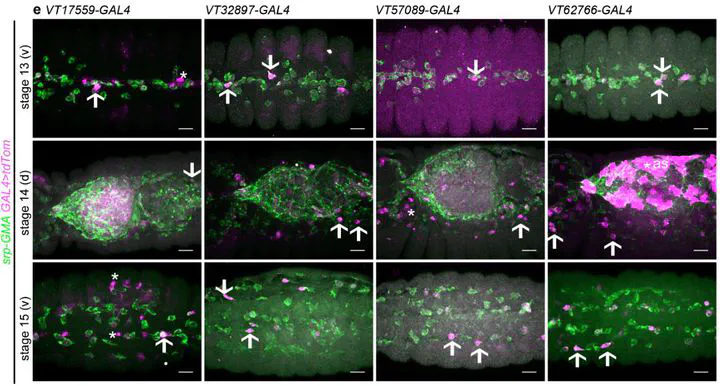Identification of functionally distinct macrophage subpopulations in Drosophila
Apr 22, 2021· ,,,,·
1 min read
,,,,·
1 min read
Jonny Coates
Amy Brittle
Emma Armitage
Martin Zeidler
Iwan Evans

Abstract
Vertebrate macrophages are a highly heterogeneous cell population, but while Drosophila blood is dominated by a macrophage-like lineage (plasmatocytes), until very recently these cells were considered to represent a homogeneous population. Here, we present our identification of enhancer elements labelling plasmatocyte subpopulations, which vary in abundance across development. These subpopulations exhibit functional differences compared to the overall population, including more potent injury responses and differential localisation and dynamics in pupae and adults. Our enhancer analysis identified candidate genes regulating plasmatocyte behaviour: pan-plasmatocyte expression of one such gene (Calnexin14D) improves wound responses, causing the overall population to resemble more closely the subpopulation marked by the Calnexin14D-associated enhancer. Finally, we show that exposure to increased levels of apoptotic cell death modulates subpopulation cell numbers. Taken together this demonstrates macrophage heterogeneity in Drosophila, identifies mechanisms involved in subpopulation specification and function and facilitates the use of Drosophila to study macrophage heterogeneity in vivo.
Type
Publication
eLife